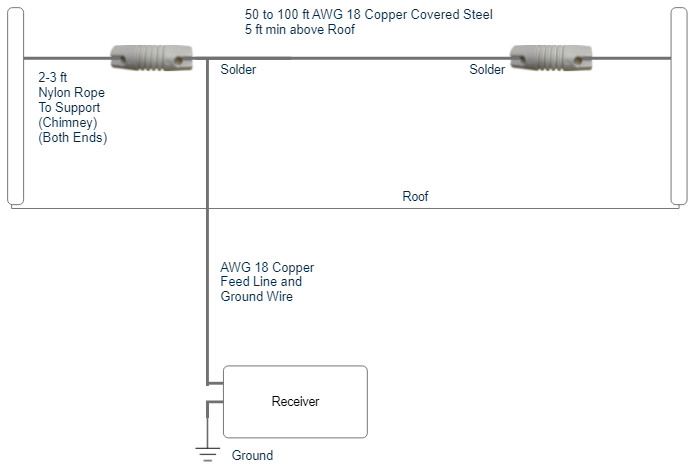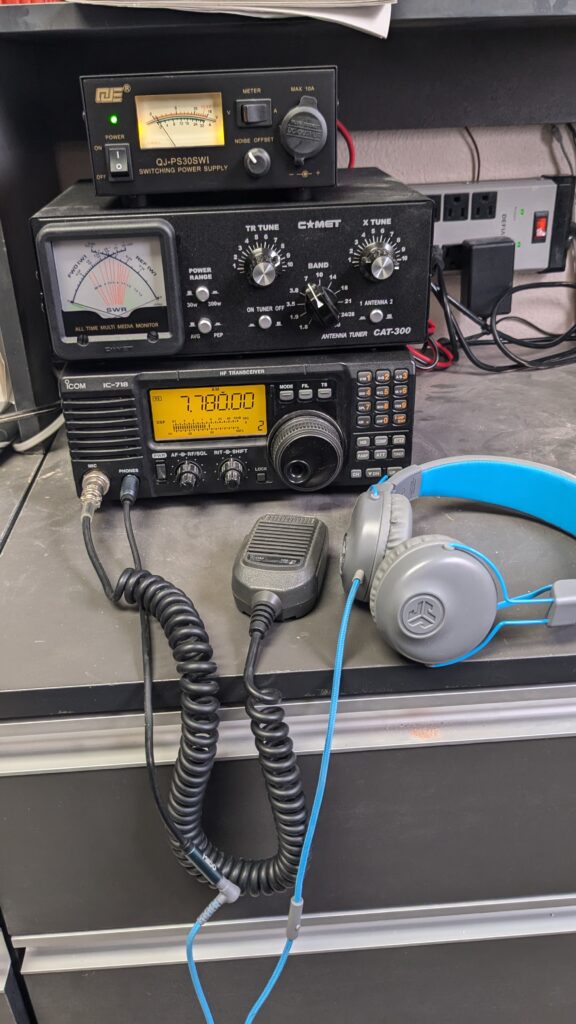When the grid goes down, there will be no outside source of information. And if it is a long term outage, you will not want to advertise to your neighbors that you are prepared if they are not. Of course, if you know it will be of shorter duration, you will be able to freely share your food, etc. knowing that you have enough to last until services are restored. So it is important to get some information from the outside world so you can plan your generosity.
More than likely, the functioning world will be thousands of miles away. Satellite communications might work via Starlink, but the control center for this system might be out of power and the entire system out of commission. A better method is high frequency (HF) short wave radio.
HF radio is defined as the frequency band starting above the AM broadcast band running from about 3 to about 30 MHz. Although it can be used to communicate over short distances, it is typically used for very long distance communications through electromagnetic reflection off the ionosphere. (The ionosphere is a series of layers of charged electrons that forms from the interaction of solar radiation with electrons in the upper atmosphere.)
HF radio was used extensively during World War II and during the cold war – 1960 to 1980. It has lost much of its popularity since then due to the development of satellite communications and the internet. But it remains a strong fallback medium in the event of satellite and internet failure. Many of the powerful HF broadcasting stations are still operating and amateur radio two-way communications exist in a number of HF bands.
The ionosphere changes its altitude, electron density, absorption and reflection properties constantly with the time of day, day of the year, latitude, solar activity, etc. This makes HF communications unreliable in the sense that communications between any two locations at a specific frequency will change from very strong to non-existent throughout the day. However, there is a lot of science behind predicting what frequencies to use and what time of day to use to communicate between any two locations. It gets very complicated, but for simplicity you can use the following guidelines.
- The best time for listening is a few hours before sunset to several hours after sunset.
- The best frequencies for listening are between 7 and 10 MHz. But it is worth checking for stations between 10 and 15 MHz also, especially before sunset.
The equipment required to receive HF broadcasts consist of an antenna, feed line, and receiver. The antenna and feed line can assume many configurations; the following is the simplest example.

The easiest way to build this antenna is to simply order a kit from eBay that contains the antenna wire, insulators, and rope. Search for “WDX2RADIO”. The copper feed line and ground wire as well as the eye hooks to support the rope ends can be purchased at any hardware store.
For a receiver, check on line for recent ratings and prices, for example https://www.amateur-radio-wiki.net/best-shortwave-radio/
My own experience with the top rated receiver (Sangean ATS-909X) was not too good. I found it confusing to use and concluded that something was wrong with the unit I had received since I could hear nothing in the HF band. So order from Amazon who will refund your money if returned within 30 days.
Another option, which is the one I ultimately chose, is to get an HF transceiver (transmitter and receiver). Of course, you should be a licensed amateur radio operator to transmit, although in the sort of crises I am anticipating, no one will be enforcing this rule. The model I selected was an ICOM IC-718 with an antenna tuner CAT-300 (both purchased used on eBay). I have used ICOM equipment for many years and have never been disappointed. As a side note, you should get an antenna tuner if you plan to use a transceiver to transmit, but you do not need it for a receive only system. An antenna tuner will reduce the reflected signal due to mismatch between the receiver or transceiver and the antenna giving you a very small increase in the received signal level. At HF, this will be negligible. But when transmitting, the reflected power may damage the transmitter, so it is important to minimize this reflection using an antenna tuner.

After setting up your antenna and receiver, spend some time to be sure everything is working correctly and become familiar with the times and frequencies where you can receive English language short wave broadcasts. Some of the strongest signals come from the US such as WRMI and WWCR, but Romania and Slovakia come through well in the early evening also. The best way to find and identify broadcasts is to use the webpage https://shortwaveschedule.com. Set the tuning step to 5 KHz, start at 7.3 MHz, and tune up until you hear an interesting broadcast. Then refer to the chart on the website to see where it is located. This is much faster than waiting to hear the station identify itself. Broadcasts are all amplitude modulated (AM).
The amateur radio band to monitor after sunset is between 7.125 and 7.300 MHz. Tune these frequencies in AM with 5 KHz tuning steps until you hear something that sounds like garbled voice. Then change the mode to lower side band (LSB) and tune in 100 Hz or smaller steps until the voice becomes clear. During daylight hours, try the range 14.150 to 14.350 MHz upper side band (USB).